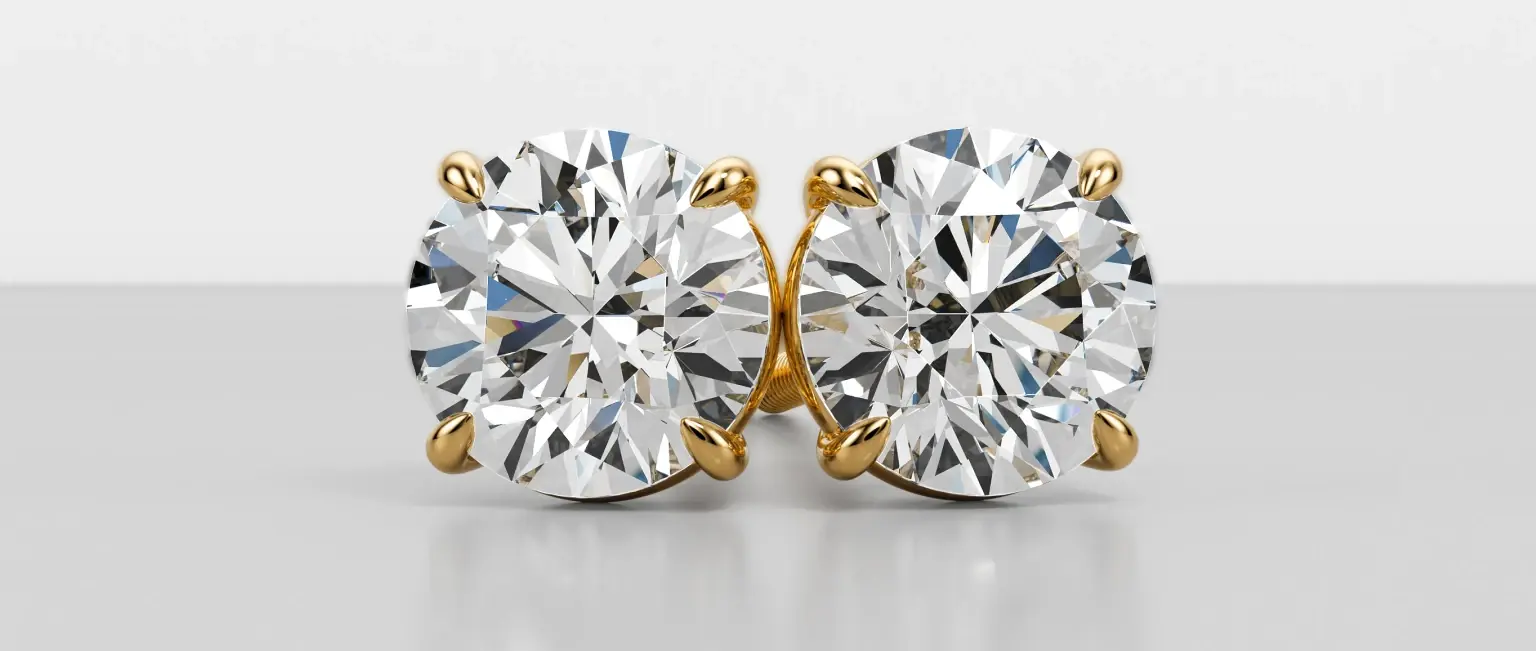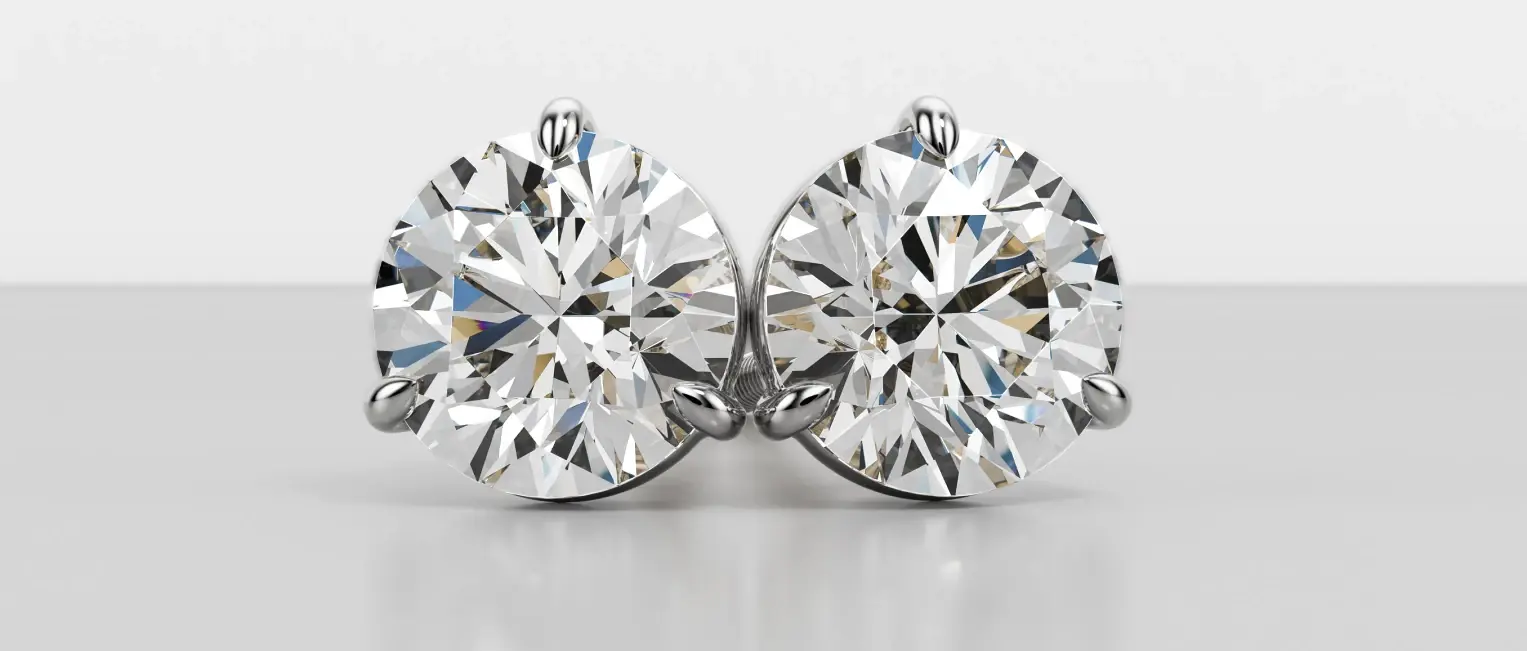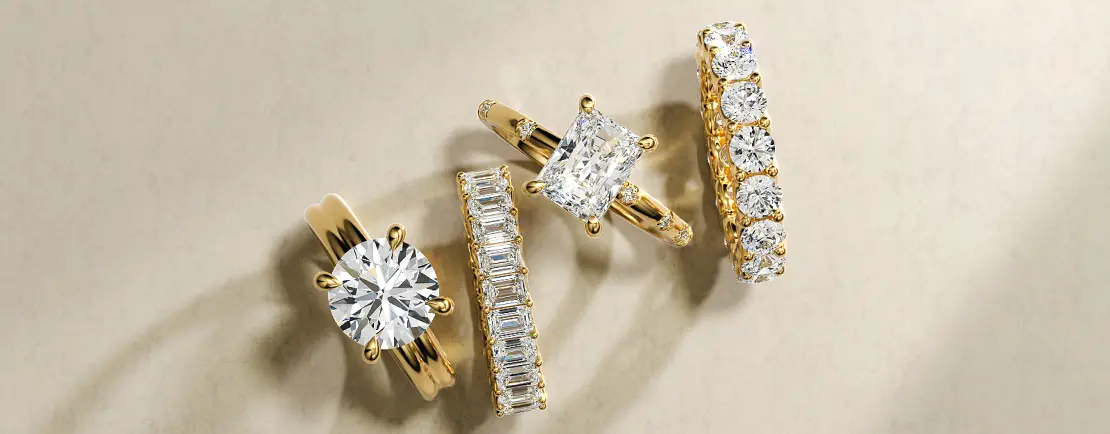Round Brilliant
The round brilliant cut has been one of the most popular diamond shapes for centuries turning it into a classic and timeless choice. The round brilliant cut emphasizes the diamonds sparkle and brilliance while offering versatility that suits all styles and metals. The pure circular silhouette of the round cut diamond has inspired many ring styles, from the halo to the solitaire, and the three stone.
The origins of the round brilliant can be traced back to the 17th century, however, it was not until 1919 that the early modern round brilliant cut was created, which at the time was named the Tolkowsky cut- after it’s creator, Russian mathematician and diamond enthusiast Marcel Tolkowsky.
It has a classic and symmetrical shape that consists of 58 facets, which qualifies them a brilliant cut. The faceting on the round cut diamonds also make color and inclusions appear better than in other fancy shapes. The beauty of the round cut diamond lies in the precision of the cut, which maximizes light and brilliance through the 58 facets.
Oval Cut
The oval diamond is a combination of the brilliant cut combined with an elongated shape. This makes it an ideal choice for a customer who likes the fire and brilliance of a round diamond but wants something more unique. Modern oval cut diamond with its 57-58 facets was developed in 1957 by famous Russian diamond cutter, Lazare Kaplan.
The oval shape creates the illusion of a greater size stone and also accentuates long, slim fingers. A ratio of 1.33 to 1.66 is the traditional range of oval-shaped diamonds. Their ratio can vary from a shorter, rounder shape to a thinner, longer shape. Most people prefer to work in the 1.35-1.50 ratio range.
Oval-cut diamonds hide clarity very well but will show slight warmth in I and J colors. All Oval cut diamonds have some degree of a bow tie- A bow tie is a dark area that runs right to left across the center of the diamond in the approximate shape of a man's bow tie. The bow-tie itself is caused by light leakage resulting from the misalignment of facets, varying from near invisible to severe.
Princess Cut
The princess cut is a modern, classic with clean, square lines. The shape of the Princess is distinguishable by its sharp right-angle corners. The cut of this diamond shape combines the step cut of the emerald cut with the triangular facets of the brilliant-cut. The princess cut looks like an inverted pyramid from the profile view and has sharp corners. Princess-cut diamonds are extremely brilliant which helps hide inclusions well. A princess-cut diamond should always be set with prongs that protect the four corners (the most likely location for chipping).
The crown of a princess — the part on the diamond that faces up when you look at it — can have either French corners or bezel corners. (Princess cuts with bezel corners have diamond-shaped facets extending from the table corners to the stone corners; those with French corners have star facets that point to the stone corners). On the pavilion or underside of a princess cut, chevron shapes produce the diamond’s brilliance.
Princess cuts can have two, three, or four chevrons. Stones with two chevrons produce larger, bolder flashes of light and color, while four chevrons will scintillate more, but with smaller facets. Those with three chevrons create a middle ground. When a diamond is cut too shallow or too deep, the light that enters the stone doesn’t properly reflect back to your eye. When searching for a princess cut, limit the depth percentage to 65-75%.
Emerald Cut
The emerald-cut is among the most classic of diamond shapes and is usually cut into a rectangular shape. Its clean lines come from step-cutting, or parallel line facets and it is always cut with blocked (cut) corners.
The length-to-width ratios for the emerald cut is typically 1.5:1 ratio, meaning that the length of the stone is be about 1½ times the width of the stone, which is the correct way to cut a true emerald shape, however, the emerald can also be cut into a square shape where it is referred to as a ‘square emerald’ which can look similar to the Asscher cut.
The unique look of the emerald cut diamond is created by the step cuts of its pavilion and its large, open table. Instead of the sparkle of a brilliant-cut, emerald-cut diamonds produce a hall-of-mirrors effect, an elegant appeal. Emerald cuts, like Asscher's mask color very well, but not inclusions (VS2 or better is recommended). They are the more popular of the two-step cut shapes since their elongation makes them appear larger than Asschers.






























